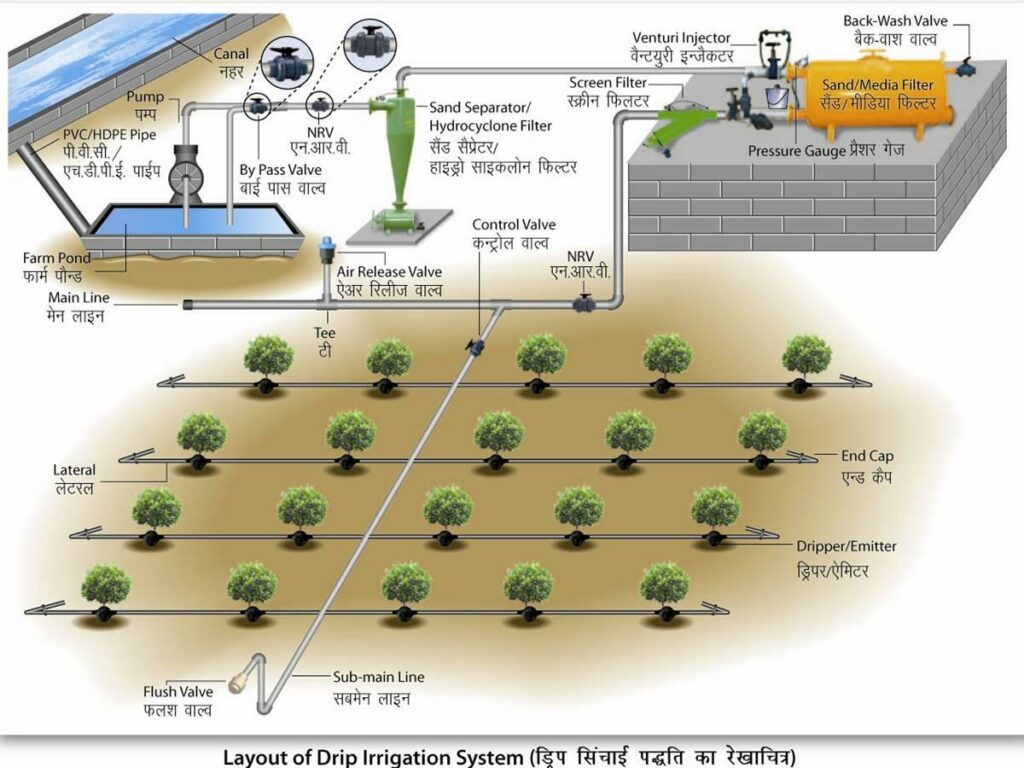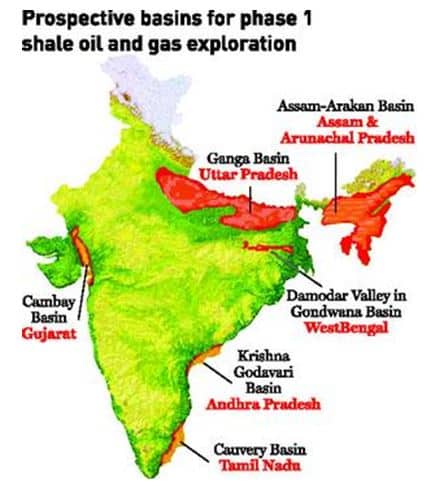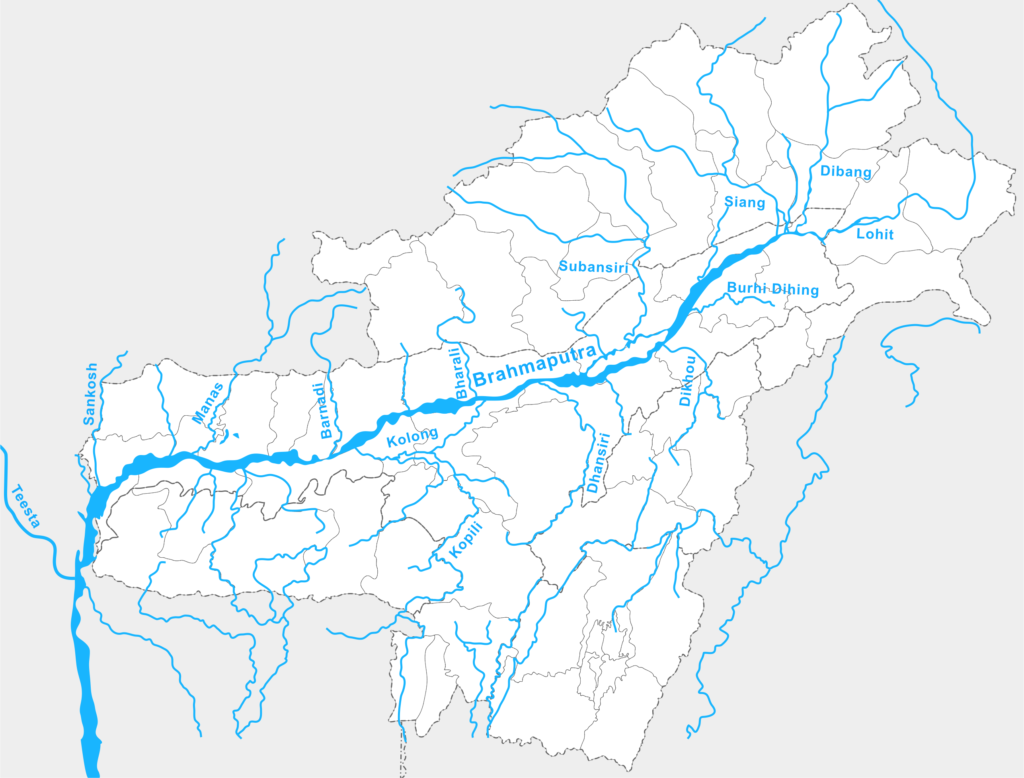Q. Why does the Government of India promote the use of ‘Neem-coated Urea’ in agriculture?
(a) Release of Neem oil in the soil increases nitrogen fixation by the soil microorganisms
(b) Neem coating slows down the rate of dissolution of urea in the soil
(c) Nitrous oxide, which is a greenhouse gas, is not at all released into atmosphere by crop fields
(d) It is a combination of a weedicide and a fertilizer for particular crops
Answer: (b) Neem coating slows down the rate of dissolution of urea in the soil
Notes:
- Urea which is necessary for the development of plants is an important supplier of nitrogen.
- But only 30-40 per cent of nitrogen present in the area is utilized by crops and the rest gets degraded in various stages.
- When ordinary urea is applied, it gets converted to ammonium carbamate.
- Some of this gets converted to ammonia gas in what is called ammonia volatilisation.
- About 8-10 per cent of nitrogen is lost during volatilisation.
- Neem has properties that check nitrogen loss at each stage.
- It slows down the process of nitrate formation and hence excess nitrate is not available for denitrification.

Neem-Coated Urea
- Neem coated urea is created by utilising two best things available. First the urea created by technology from Air & Natural gas and second products from nature’s gift i.e. neem plant. Neem has proven Nitrification inhibition properties and hence slows down the release of nitrogen from urea and makes available nitrogen over a longer period with minimum loss of nitrogen thereby increasing nitrogen use efficiency.
- Neem coated urea has been demonstrated to improve Nitrogen Use efficiency and consequently increases crop yield especially in Paddy crop in which NUE is as low as 30% and in wheat where NUE is reported around 50%.
- Coating with neem oil also prevents caking of urea and also reduces the chances of powder formation during transportation & handling.
- Repellent action of neem also controls many insect-pests and wild animals in fields applied with neem coated urea.
Q. Which of the following is/are the advantage/advantages of practising drip irrigation?
- Reduction in weed
- Reduction in soil salinity
- Reduction in soil erosion
Select the correct answer using the code given below.
(a) 1 and 2 only
(b) 3 only
(c) 1 and 3 only
(d) None of the above is an advantage of practising drip irrigation
Answer: (c) 1 and 3 only
Drip irrigation
- Drip irrigation is a type of micro-irrigation system that applies small amounts of water and fertilizer uniformly across a specific area.
- Drip irrigation is sometimes called trickle irrigation and involves dripping water onto the soil at very low rates (2-20 litres/hour) from a system of small diameter plastic pipes fitted with outlets called emitters or drippers.
- Water is applied close to plants so that only part of the soil in which the roots grow is wetted, unlike surface and sprinkler irrigation, which involves wetting the whole soil profile.
- Water and nutrients enter the soil from the emitters, moving into the root zone of the plants through the combined forces of gravity and capillary.
- In this way, the plant’s withdrawal of moisture and nutrients are replenished almost immediately, ensuring that the plant never suffers from water stress, thus enhancing quality, its ability to achieve optimum growth and high yield.
- Benefits of drip Irrigation:
- Increase in yield up to 230 %.
- Saves water up to 70% compare to flood irrigation. Water losses can be reduced to a minimum;
- Drip irrigation can be employed in all landscapes;
- Soil erosion can be reduced to a minimum.
- Fertilizer and nutrients can be used with high efficiency;
- As water leaching is reduced, fertilizer/nutrient loss is minimized
- Weed growth is reduced as water and nutrients are supplied only to the cultivated plant.
- Disadvantages of Drip Irrigation
- The initial cost is high.
- May cause clogging if the water is not filtered correctly.
- Problems in moisture distribution.
- Increases soil Salinity.

Q. In which of the following regions of India are shale gas resources found?
- Cambay Basin
- Cauvery Basin
- Krishna-Godavari Basin
Select the correct answer using the code given below.
(a) 1 and 2 only
(b) 3 only
(c) 2 and 3 only
(d) 1, 2 and 3
Answer: (d) 1, 2 and 3
Notes:
- Ministry of Petroleum and Natural Gas (MoPNG) has identified six basins as potentially shale gas bearing. These are:
- Cambay, Assam-Arakan, Gondwana, Krishna-Godavari, Kaveri, and the Indo-Gangetic plain.
- Shales are fine-grained sedimentary rocks that can be rich resources of petroleum and natural gas.
- Shale rocks are usually found adjacent to rocks containing useable/ drinking water known as ‘aquifers’.
- Shale Gas is trapped under low permeable rocks.

Shale oil
- Shale oil is an unconventional oil produced from oil shale rock fragments by pyrolysis, hydrogenation, or thermal dissolution.
- These processes convert the organic matter within the rock (kerogen) into synthetic oil and gas.
- The refined products can be used for the same purposes as those derived from crude oil.
- Shale production in the world
- Russia and the US are among the largest shale oil producers in the world.
- With a surge in shale oil production in the US, it has played a key role in turning the country from an importer of crude to a net exporter in 2019.
- As per the US EIA 2015 report, India has got technically recoverable shale gas of 96 trillion cubic feet.
- The recoverable reserves are identified in Cambay, Krishna – Godavari, Cauvery, Damodar Valley, Upper Assam, Pranahita – Godavari, Rajasthan and Vindhya Basins.
- The ONGC has drilled the first exploratory shale gas well in Jambusar near Vadodara, Gujarat, in Cambay basin during October 2013.
Q. In India, the steel production industry requires the import of
(a) Saltpetre
(b) Rock phosphate
(c) Coking coal
(d) All of the above
Answer: (c) Coking coal
Notes:
- Saltpetre (Potassium nitrate) is not used in the production of Steel.
- It is used in the production of fertilizers, tree stump removal, rocket propellants and fireworks.
- It is one of the major constituents of gunpowder (black powder) and has been used since the Middle Ages as a food preservative.
- Rock phosphate is used in the production of fertilizer and not for the production of Steel.
- India imports coking coal.
- The production of steel requires 0.8 tonnes of coking coal to produce one tonne of Steel.
Q. Which of the following is/are tributary/tributaries of Brahmaputra?
- Dibang
- Kameng
- Lohit
Select the correct answer using the code given below:
(a) 1 only
(b) 2 and 3 only
(c) 1 and 3 only
(d) 1, 2 and 3
Answer: (d) 1, 2 and 3
River Brahmaputra:
- River Brahmaputra is known by the name of the Yarlung Tsangpo in the Tibet region.
- It originates in Chemayungdung glacier in the Himalayas and drains into the Bay of Bengal.
- It is about 2,900 km in length.
- After flowing through Tibet it enters India through Arunachal Pradesh and flows through Assam and Bangladesh before it joins the Bay of Bengal.
- The river crosses Assam and enters Bangladesh where the river is known as Jamuna and joins Ganga and then finally drains into the Bay of Bengal.
- Dibang River, Lohit River, Dhansiri River, Kameng River, Manas River, Teesta River, Subansiri River are the major tributaries of River Brahmaputra.

Q. With reference to ‘Red Sanders’, sometimes seen in the news, consider the following statements:
- It is a tree species found in a part of South India.
- It is one of the most important trees in the tropical rain forest areas of South India.
Which of the statements given above is/are correct?
(a) 1 only
(b) 2 only
(c) Both 1 and 2
(d) Neither 1 nor 2
Answer: (a) 1 only
Red Sanders
- Pterocarpus santalinus also known by Red Sanders, Red Saunders, Red Sandalwood, Rakt Chandan, and Saunderswood, is a species of Pterocarpus endemic to the southern Eastern Ghats mountain range of South India.
- It is Mostly found in Andhra Pradesh.
- It regenerates well in dry hot climate.
- It is not grown is tropical rain forest.
- It is usually found at altitudes of 150 – 900 m.
- The dry, hilly, often rocky ground, and hill sides are suitable for its growth.
- It grows on lateritic and gravelly soil and cannot tolerate water logging.

Q. Consider the following pairs:
Famous Place Region
- Bodhagaya : Baghelkhand
- Khajuraho : Bundelkhand
- Shirdi : Vidarbha
- Nasik (Nashik) : Malwa
- Tirupati : Rayalaseema
Which of the pairs given above are correctly matched?
(a) 1, 2 and 4
(b) 2, 3, 4 and 5
(c) 2 and 5 only
(d) 1, 3, 4 and 5
Answer: (c) 2 and 5 only
Notes:
- Khajuraho is famous for a group of monuments, built between 950-1050 CE by the Chandela dynasty. Khajuraho is a town located in the Bundelkhand region of the Indian state of Madhya Pradesh.
- Bodh Gaya is a Buddhist pilgrimage site in Gaya District of Bihar, famous for Mahabodhi Temple.
- Shirdi is in the Ahmadnagar district of Maharashtra and is far from the Vidarbha region and is famous for the religious personality of Sai Baba.
- Nashik is in the northwest region of Maharashtra in India and is famous for Kumbh Mela.
- Tirupati is a city in the Rayalseema region of the Chittoor district of the Indian state of Andhra Pradesh and is famous for Hindu Sri Venkateswara Temple.
